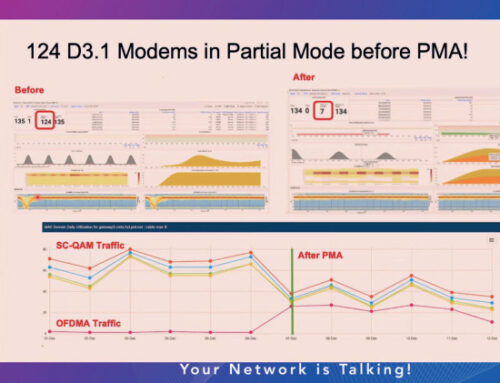Evolve or Die: Can DOCSIS 4.0 Compete with Fiber?
The Telecommunications Act of 1996 forever changed the cable industry. It allowed cable and telecom to directly compete with each other. Data-Over-Cable Service Interface Specifications (DOCSIS) was already in development which enabled the cable industry to provide high speed data and later voice-over-Internet protocol (VoIP). It has been over a 20-year competition between telecom and cable operators, one that the cable industry has done quite well with and the telecom industry has struggled to keep up. The question we face is will DOCSIS 4.0 and future versions of DOCSIS enable us to keep up with the telecom industry’s focus on fiber deep deployment?
Physics
From the technical side, let’s look at the raw capability of fiber and today’s DOCSIS 4.0 technologies.
Today we are looking to extend the RF range of coax cable up to 1.8 GHz (investigation for up to 3 GHz is underway for even more capacity!). This falls under the terminology of extended spectrum DOCSIS (ESD) in the DOCSIS 4.0 specification.[1] DOCSIS 4.0 supports a downstream throughput with 4096-QAM and 25 kHz subcarrier spacing of up to 1.89 Gbps per 192 MHz OFDM channel. In typical deployments we can fit six OFDM channels in ESD. This would give us:
6 OFDM channels x 1.89 Gbps = 11.34 Gbps
That exceeds our 10G initiatives. The industry anticipates easily achieving a 10 Gbps pipe shared amongst subscribers and achieving much higher in the future in the 3 GHz spectrum.
Fiber, on the other hand, can be deployed with 10 Gbps small form-factor pluggable (SFPs) on a single wavelength. 100 Gbps is generally implemented as 10×10 Gbps on 10 “channels” or different wavelengths of light. That is 10 times more capacity than DOCSIS 4.0 and it exists today.
— Fiber is the winner from a pure physics standpoint as it is inherently easier to provide higher bandwidths in fiber. Both cable operators and telecom operators can deploy fiber and are doing so today.
Cost
Cost of deployment is where coax has a huge advantage over fiber.
The cost to install new fiber is on parity with coax. Be it aerial or buried, there is a lot involved with permits, trenching, not to mention the headaches of tearing up people’s lawns. The benefit with coax is that it is already there, passing more than 90% of the homes in the U.S. market.[2] The biggest expense with fiber is running the subscriber drop. Again, most homes already have the coax drop in place.
— DOCSIS remains the clear winner here.
Reliability
Reliability is a challenge for DOCSIS due to the mechanical and environmental degradation and failures that occur in the coaxial plant. Anyone who has ever worked in a cable plant knows that coax does not get better over time. It’s not self-healing. Studies have shown that fiber costs five times less per mile than coax to maintain. Further, if there are fewer problems with a fiber network the end user or subscriber is less likely to experience problems due to plant impairments. This often translates directly into more satisfied customers.
— However, with just plain facts fiber wins in reliability.
Marketing
Marketing is the great intangible, which I have written about in previous Broadband Library articles. Faster speeds, better service, less cost and 10G sound great. Even if we don’t know what we will do with a 1 Gbps Internet connection most will surely take it if it is offered. It is very tough to win a marketing war against raw speed. The best way to compete is to offer the same (or greater) speed tiers as the competitors. DOCSIS 4.0 enables this competition by providing a 10 Gbps pipe.
— Today, coax and fiber are a tie.
Summary
By Brady Volpe – Finish reading at Broadband Library





Leave a Reply